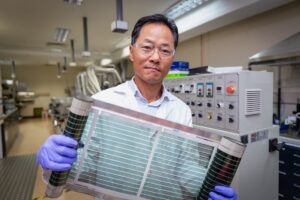A researcher at CQUniversity in central Queensland has been awarded a $240,000 grant by the Queensland Government’s Department of Tourism, Innovation and Sport (DTIS) to investigate ways to manage voltage issues as rooftop solar takes off in regional Australia.
The grant, delivered under the Advance Queensland Industry Research Fellowship program, will allow Dr Umme Mumtahina to conduct the research project, Shaping Queensland’s Grid for Sustainable Growth, over three years.
The project is also backed by industry partner ElexSys Energy, which has invested $357,512.
According to Mumtahina, the Queensland Government’s renewables targets mean energy infrastructure will need to adapt quickly as the paradigm on which traditional electricity generation rests shifts.
“The Queensland Government has a 70% renewables energy target by 2032 which will create a pathway for net zero emission over the next few decades, but to meet this target Queensland will need a rapid increase in roof top solar,” she says.
“With the increase of penetration of distributed energy resources in the grid, there comes some challenges such as voltage rise and voltage unbalance, particularly in rural areas.
“This project will use an innovative system approach to construct a comprehensive roadmap for the utilisation of distributed renewable energy resources.”
Traditional, centralised grids transmit energy from large, distant generation plants along transmission lines to homes, hospitals and businesses in a unilinear flow. Many rural Queensland towns are supplied by single circuit radial medium voltage feeders (mainly 33 kV and 66 kV) which supply small, lightly loaded substations over long distances, often 50 to 100 kilometres.
These networks often experience outages due to storms and bushfires, and are themselves a fire risk.
With that in mind, Mumtahina’s project aims to both stabilise electricity access to rural communities and prevent voltage issues associated with a sharp uptick in rooftop solar.
“Again, when rooftop PV will be increasing, generation from the customer side will also be increasing, which will cause reverse power flow back to the grid,” she says.
Mumtahina’s project hopes to prove that by installing ElexSys STATCOM units in conjunction with battery systems, voltage rise issues can be alleviated.
“The ElexSys system combines innovative hardware and software to regulate voltage,” she explains.
“Distributed energy storages will also be added to the grid to store energy during daytime and play it back at night time to maintain the network.
“By integrating rooftop solar PV and battery energy storage systems, the reliability and power quality of the electricity supply to rural communities will be enhanced. This will also help to build resilience against natural disasters.”
The project will conduct its first three-year trial in partnership with the Winton Shire Council. If successful, the systems could be rolled out to other rural areas in Australia.










